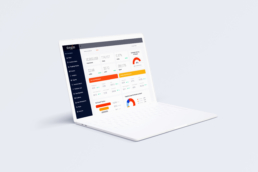Today we’re publishing our brand new eBook “How Media Buyers Can Crush It with Native Advertising Today,” to give media buyers and content marketers a framework for driving immediate success with native ads.
The Native Advertising Framework is based on planning, running, and measuring numerous campaigns with different advertisers across multiple categories.
While this framework is valuable on its own, it all starts with understanding what’s driving the need for it in the first place. The fact is that consumers demand a better experience online. They’re fed up with interruptive ads and other tactics that take away from their experience rather than add value to it.
Native advertising is a response to this, and while there are clear similarities to how other digital marketing programs are approached, native ad campaigns come with some critical differences and nuances that media buyers must appreciate in order to be successful.
 Objectives
Objectives
We realize sales tends to be the business objective, but the corresponding native ad campaign objective has to be a bit more sophisticated in order to ultimately sell. It boils down to (1) viewing prospecting goals separately from retargeting and (2) setting prospecting goals at the right point of the purchase path.

Audience
Marketers typically know who they want to target, but they may not always know where they are in the purchase funnel. Back to prospecting vs. retargeting— it is inefficient at best to deliver the same content in those very different scenarios. And at worst, it can create a crappy experience for the consumer.
Content
Philosophically, native is based on the idea that consumer attention is finite and that marketers need to earn it with meaningful content, before they can effectively talk about how great their products are. It may sound trite, but it comes down to providing value before asking a consumer to take an action.

Distribution
Native advertising offers powerful opportunities for capturing consumer attention, but the market for buying native ads is already fragmented, with many options to reach audiences across a variety of networks, ad formats, and targeting choices. Which sources are best based on the exact need of the marketer?
Measurement
One of the keys to native success is setting specific, measurable, and actionable performance goals, which can be difficult if you’re running native campaigns for the first time. We recommend establishing a set of performance goals based on your brand objectives, content purpose, and your media mix.
We elaborate extensively on each part of this framework in the eBook with campaign examples and key takeaways as well as the pitfalls to avoid in the world of native.
As media buyers get deeper into native, it’s critical to keep in mind that native advertising is neither just a politer ad format or a replacement for display; it’s an entirely new distribution channel for brands to promote owned, earned, and paid content, with greater scale, targeting, and efficiency.
Get your free copy of the eBook “How Media Buyers Can Crush It with Native Advertising Today.”




![The Value and Benefits of Native Advertising [Infographic]](https://www.storygize.com/wp-content/uploads/2022/04/AdobeStock_26044132-uai-258x172.jpeg)









